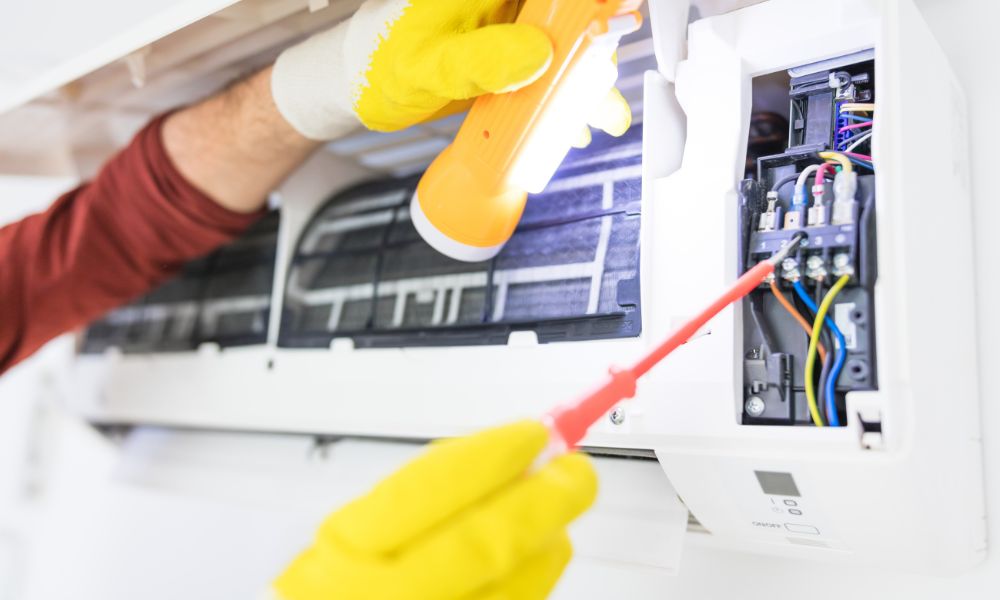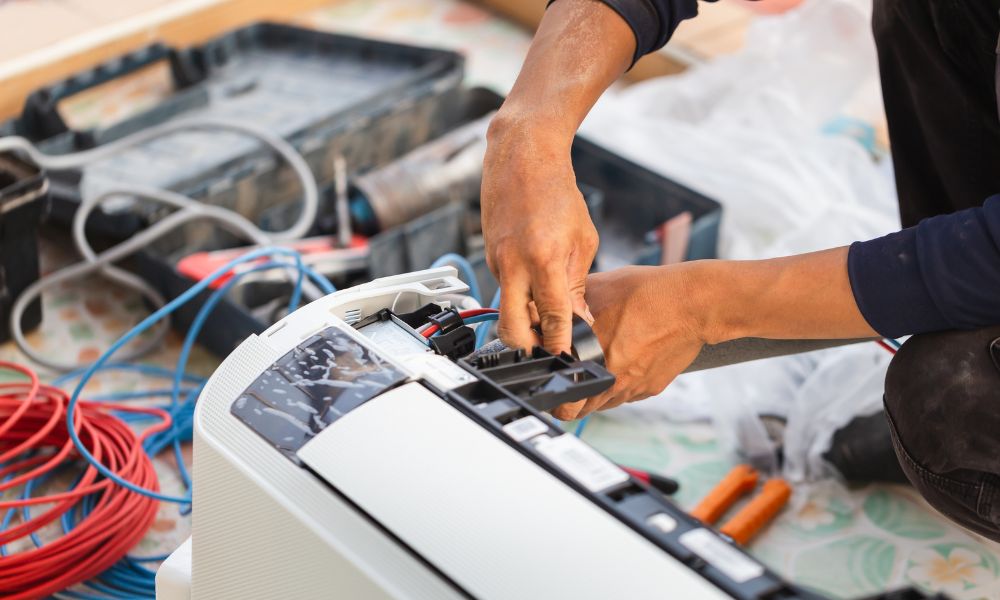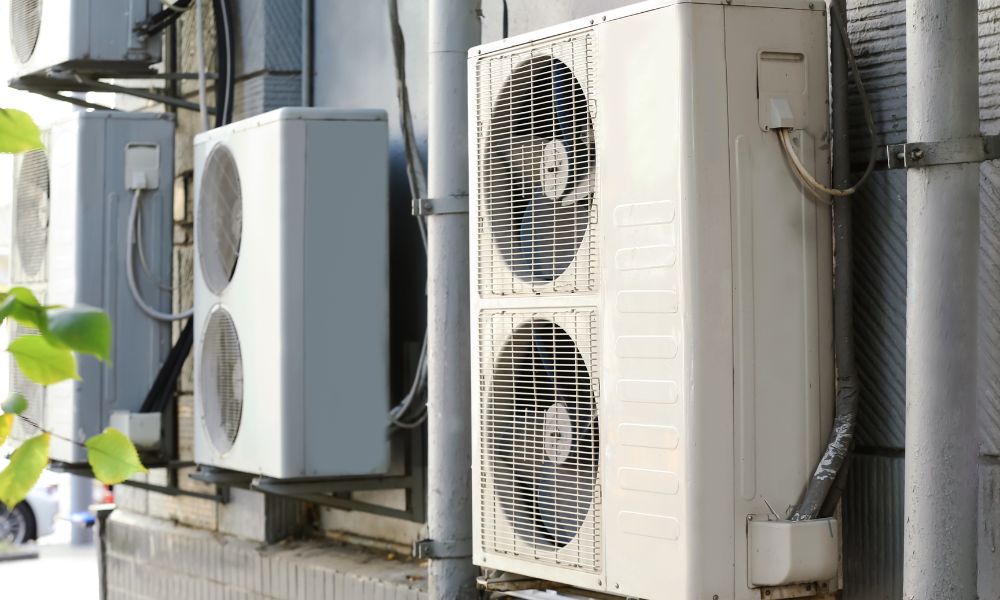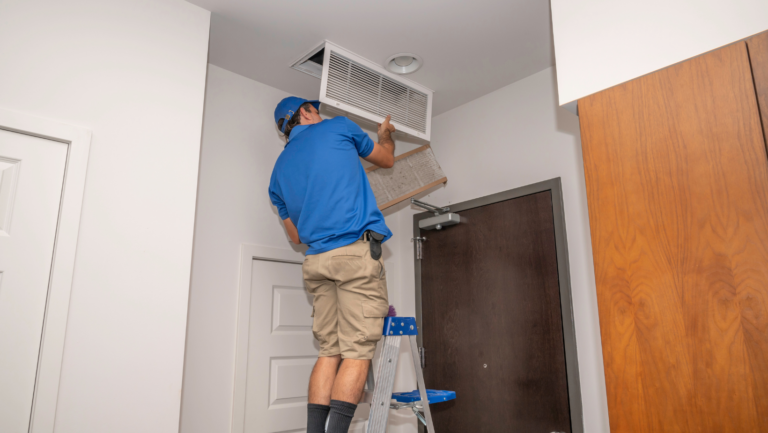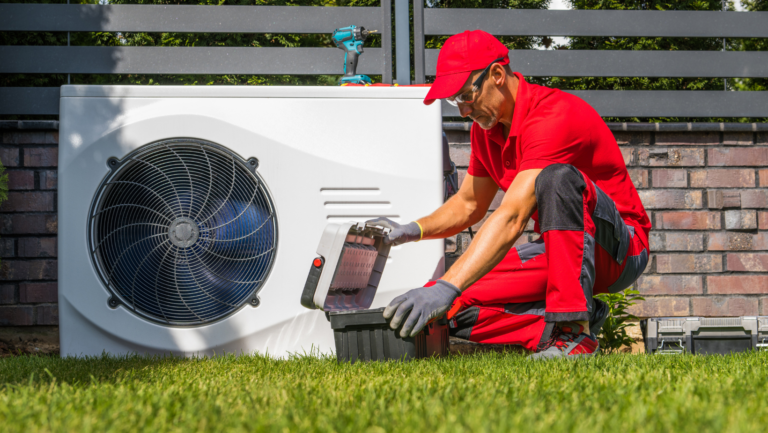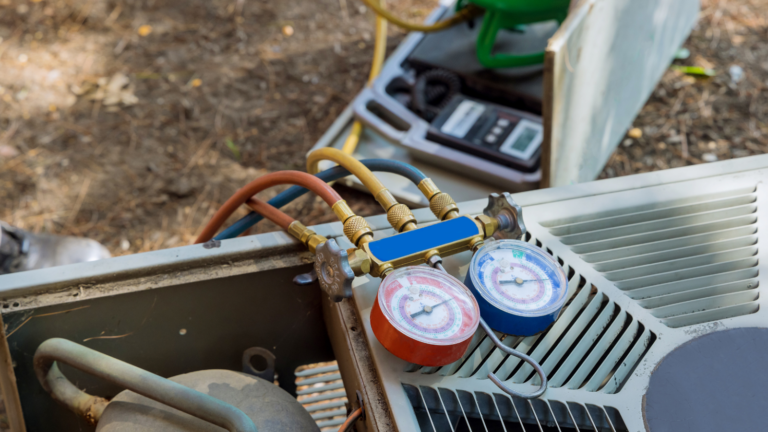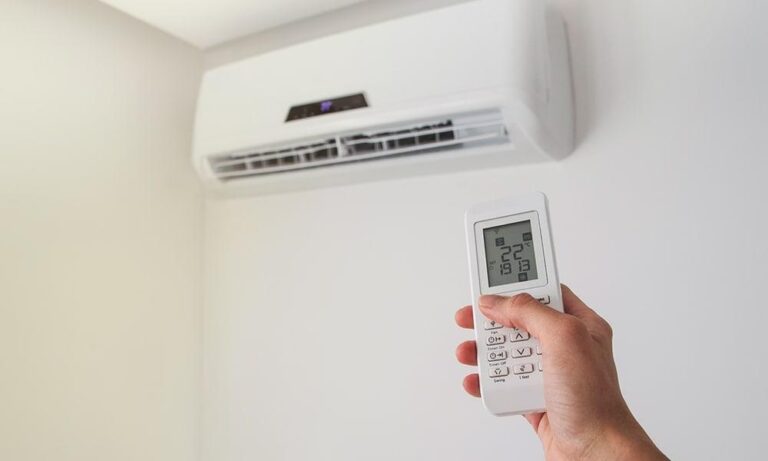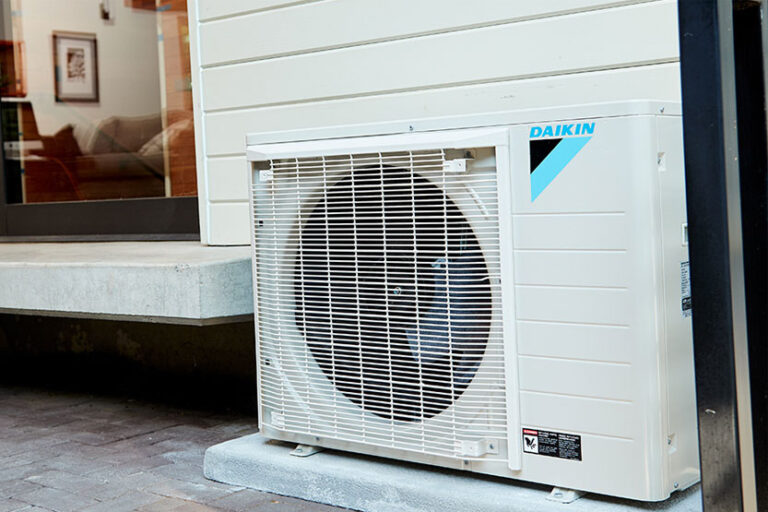Can Air Conditioner Parts Be Repaired?
Air conditioners are essential in maintaining comfort at home, especially during hot months. However, homeowners often face issues with their air conditioning systems and wonder whether they need to repair or replace the malfunctioning parts. Repairing air conditioner parts can sometimes be a more cost-effective solution compared to replacing the entire unit.
Knowing when to repair instead of replacing is crucial. Not all components of an air conditioning system need a complete overhaul when something goes wrong. In many cases, AC compressor repair, fixing refrigerant leaks, or replacing faulty electrical components can extend the life of the system and ensure it continues to blow cool air efficiently. Repairs may also reduce labor costs and the expense of purchasing a new unit, allowing homeowners to live comfortably without breaking the bank.
Types of Air Conditioner Systems
Understanding the type of air conditioning system you have helps determine repair options. Central air systems, often used in larger homes, circulate cool air through ducts and may require repairs to components like the compressor or expansion valve. Ductless mini-splits, ideal for homes without ducts, are easier to repair due to simpler parts, such as the outdoor unit.
Window and portable AC units are smaller and typically easier to fix but might be replaced if repairs are not cost-effective. Hybrid and geothermal systems, while more complex, can be maintained with proper care to avoid bigger problems.
No matter the system type, regular maintenance and timely repairs help prevent more costly issues and ensure that your home stays cool and comfortable.
Contact a Professional HVAC Contractor Today!
Common Air Conditioner Parts That May Need Repair
Various components of your air conditioner can experience wear and tear over time, leading to the need for repairs. Here are some key parts that might require attention:
- Compressor
- Condenser Coils and Evaporator Coils
- Thermostat
- Fan and Motor
- Air Filters
- Expansion Valve
- Capacitors and Contactors
- Refrigerant Lines
- Drain Lines and Drain Pans
Signs That Your Air Conditioner Needs Repair
Recognizing early signs of air conditioner issues can save you from costly repairs. Poor airflow or inconsistent cooling often points to compressor problems, blocked suction lines, or refrigerant leaks. Unusual noises like grinding or rattling could mean internal parts need attention. Water leaks, foul odors, and frequent cycling are also red flags. These issues may stem from electrical components like the circuit breaker or fuse box.
High energy bills and thermostat malfunctions are other indicators of trouble. Addressing these signs promptly with professional help can prevent bigger issues, such as compressor failure, and keep your system running smoothly.
Can All Air Conditioner Parts Be Repaired?
Not every air conditioner part is easily repairable. Simple components like air filters, thermostats, and drain lines can typically be repaired or replaced with minimal expense. However, more significant parts, such as the compressor, may present a challenge.
Homeowners often wonder, can an air conditioner compressor be repaired? In many cases, compressors can be repaired, but it depends on the extent of the damage. Factors like the unit’s age, repair costs, and the availability of replacement parts all influence whether repair is feasible. If the damage is too severe or the costs are too high, replacing the compressor or other major components may be the better option.
How to Diagnose Common AC Problems
Before calling a technician, basic troubleshooting can help identify common AC issues. Start by checking the thermostat settings, ensuring the power is on, and inspecting the air filters and circuit breaker for issues. Having basic tools like a voltage tester or a thermometer can help diagnose problems like a refrigerant leak or blocked suction lines. However, if these steps don’t resolve the issue or the problem seems more complex, it’s best to call a professional technician to prevent further damage to the system.
DIY Air Conditioner Repairs
Some simple AC repairs can be handled without professional help. Cleaning or replacing air filters, clearing a clogged drain line, resetting the thermostat, and tightening loose electrical connections are straightforward tasks most homeowners can tackle.
However, DIY repairs have their limits. Issues involving refrigerant, electrical components, or compressor problems should always be handled by a professional to avoid costly mistakes or safety hazards. Knowing when to call for professional services can save you from bigger problems down the line.
Professional Air Conditioner Repair Services
For more complex air conditioner repairs, seeking professional help is essential. Certified HVAC technicians are trained to handle electrical issues, refrigerant leaks, and compressor failures. While the cost of professional AC repairs can vary based on the complexity of the problem, labor costs, and parts needed, investing in expert help ensures the job is done correctly. To find a reliable AC repair service, look for licensed professionals with strong customer reviews and transparent pricing to avoid unexpected costs.
Preventative Maintenance to Avoid Repairs
Regular maintenance is key to keeping your air conditioning system running smoothly and avoiding costly repairs. A good maintenance checklist includes tasks like cleaning coils and fins, inspecting electrical components, lubricating moving parts, checking refrigerant levels, and cleaning or replacing air filters.
By following this routine, you can catch potential issues early and ensure that your system remains efficient. Preventative maintenance not only keeps your AC running smoothly but also extends its overall lifespan, helping you avoid expensive repairs or premature replacement of major components like the compressor or condenser coils.
Repair Costs for Different AC Parts
The cost of repairing air conditioner parts varies depending on the component and the severity of the damage. Compressor repair costs can range from $1,000 to $2,500, depending on the unit’s size and labor involved. Condenser coil repairs typically cost between $500 and $1,200, while evaporator coil repairs can range from $600 to $1,500.
Repairing or replacing the fan and motor may cost between $200 and $700, depending on the unit. Thermostat repairs or replacements are usually more affordable, ranging from $100 to $300. These prices can fluctuate based on the type of AC system and the technician’s rates, so getting a professional estimate is always recommended.
Benefits of Repairing Air Conditioner Parts
Repairing air conditioner parts offers several benefits, including significant cost savings compared to replacing the entire unit. Timely repairs also improve energy efficiency, ensuring that your system operates smoothly and uses less energy. By repairing faulty components, you extend the lifespan of your AC unit, allowing it to provide cool air for many more years. Additionally, repairing instead of replacing parts reduces waste, contributing to a positive environmental impact by lowering the amount of discarded appliances and materials.
When Is Replacement a Better Option?
Sometimes, repairing your air conditioner may not be the most cost-effective solution. Signs that it’s time to replace your AC include frequent breakdowns, high repair costs, or the system being over 10-15 years old. When comparing repair vs. replacement costs, replacement may be the better choice if repair expenses add up to more than half the cost of a new unit. Upgrading to a new system offers several advantages, such as improved energy efficiency, enhanced cooling technology, and lower long-term maintenance costs, making it a worthwhile investment.
The Impact of AC Repairs on Energy Efficiency
Air conditioner repairs play an important role in maintaining energy efficiency. Fixing issues like blocked coils, faulty motors, or refrigerant leaks helps the system run more smoothly, using less energy to cool your home. Common problems, such as dirty filters or malfunctioning thermostats, can reduce efficiency and increase energy consumption.
One major issue that significantly impacts efficiency is a refrigerant leak. When refrigerant levels are low, the AC works harder, consuming more power and failing to cool effectively, leading to higher energy bills.
Common Myths About Air Conditioner Repairs
There are many myths surrounding air conditioner repairs, which can lead to confusion and poor decisions. Let’s address some of the most common misconceptions:
Myth: All AC Parts Are Easily Replaceable
While some parts, like filters and thermostats, are easy to replace, others, such as the compressor or evaporator coils, can be more complex. These components often require special tools and expertise to handle. In some cases, parts may even be discontinued, making it harder and more expensive to find suitable replacements, especially for older units.
Myth: DIY Repairs Are Always Cheaper
While it’s tempting to handle repairs yourself to save money, DIY isn’t always the most cost-effective solution. Simple tasks like cleaning air filters are manageable, but dealing with refrigerant leaks, electrical issues, or compressor repairs can lead to costly mistakes. Without the right knowledge and tools, you risk further damage, which can make professional repairs even more expensive in the long run.
Myth: Older Units Can’t Be Repaired
Many people assume that once an air conditioner reaches a certain age, repairs are no longer an option. However, older units can still be repaired if the damage isn’t too severe. Regular maintenance can extend the life of an older unit, and many parts are still available for repair. The decision to repair or replace should be based on the overall condition of the unit and repair costs, not just its age.
Risks of Neglecting Air Conditioner Repairs
Neglecting AC repairs can lead to various problems, including increased energy costs due to the unit working harder to maintain temperature. You may also experience more frequent breakdowns, leading to higher repair expenses over time.
When small issues go unchecked, they can cause damage to other parts of the system, such as the compressor or evaporator coils, making the repair process more complicated and expensive. Additionally, a poorly maintained AC unit can impact indoor air quality by circulating dust, allergens, and other particles, which can affect your health and comfort.
Warranties on Air Conditioner Parts and Repairs
Warranties offer valuable protection for air conditioner parts and repairs. Manufacturer warranties typically cover major components like the compressor and condenser for a specific period, often ranging from 5 to 10 years. Repair warranties, on the other hand, usually cover the labor and parts replaced by a technician for a shorter period, such as 90 days to a year.
To claim a warranty, you’ll need to provide proof of purchase and ensure that the repair was done by a certified technician. It’s essential to understand the terms of your warranty to avoid unexpected costs if something goes wrong.
Environmentally Friendly Repair Options
Sustainable repair practices can help minimize the environmental impact of air conditioner repairs. Opting for repairs rather than replacing the entire unit reduces waste and conserves resources. Recycling old AC parts, such as metal components and refrigerants, helps prevent harmful materials from ending up in landfills. Additionally, choosing energy-efficient replacement parts, like eco-friendly refrigerants or high-efficiency motors, can reduce energy consumption and contribute to a greener home.
The Role of Technology in Air Conditioner Repairs
Advances in technology are transforming how air conditioners are repaired and maintained. Smart AC systems now come with diagnostic tools that can detect issues early, alerting homeowners or technicians before a minor problem becomes a major repair. Technology also plays a role in preventative maintenance by tracking usage patterns and predicting when components need servicing. This proactive approach can reduce repair costs and extend the life of your unit, ensuring it operates efficiently for years to come.
Keeping Your AC Running Smoothly
Regular maintenance and timely repairs are key to ensuring your air conditioner performs efficiently, produces cold air and lasts longer. Understanding which parts can be repaired and when replacement is necessary helps you make informed decisions, saving both time and money.
Whether it’s simple DIY tasks or more complex issues that require professional attention, keeping your AC in top shape ensures a comfortable and energy-efficient home environment. Don’t wait until small issues become major problems—addressing repairs promptly is the best way to avoid costly replacements and keep your system running smoothly for years.

